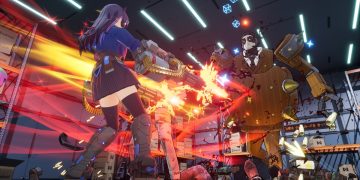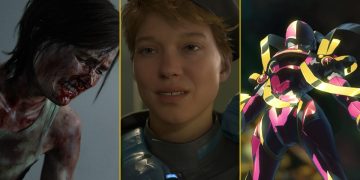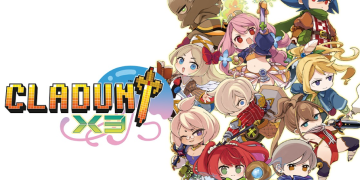Love, or perhaps just a close friendship, is soaring to new heights in Warframe 1999. While there are plenty of exciting elements to look forward to in this major update, like a motorbike, an infested boyband, or a brand-new enemy faction, it’s the unique set of characters hanging around a dilapidated mall that has truly captured players’ imaginations. Curious how this came to be? And how did a celebrated romance novelist find themselves working on Warframe?
It’s an intriguing tale. Game director Rebecca Ford revealed that the Warframe team wanted to incorporate a relationship system due to The Drifter’s maturity and their burgeoning found-family dynamic with proto-frame characters. Yet, the team lacked the know-how to make it happen. Enter Kat Kingsley, a seasoned romance novelist who was searching for new opportunities.
Players have always been fond of our characters, Ford points out, and with The Drifter being older and surrounded by a makeshift family, the team wondered if they could harness the 1999 worldbuilding to craft a text-message-based relationship system that allowed for both platonic and romantic connections.
Kingsley has previous experience in the industry, having served as a studio manager and chief of staff at Volition Games, while indulging in romance writing on the side. However, when Volition was shut down, and she was part of the team managing the closure, Kat was left wondering about her next steps—until she received a LinkedIn message from Rebecca a couple of weeks later.
A year down the line, Kingsley remarks on the sheer joy of not only designing this system but also scripting and shaping it. Her role extended beyond writing, as she collaborated with designers, UI artists, and programmers to create a unique player experience.
Ford shared an interesting tidbit: initially unaware of Kingsley’s gaming industry experience, she only knew of her as a romance novelist. Yet Kat’s expertise in both fields proved invaluable. During the COVID pandemic, Ford found herself reading 25 of Kingsley’s books, appreciating her contribution to the project.
Transitioning from novel writing to scripting for a live-service game is no small feat. The interaction dynamics between player and characters differ significantly, and the stakes are high. Warframe’s romance system presented its unique challenges, as discussed by Ford and Kingsley.
One major hurdle Ford mentions is the absence of a savable choice system in Warframe’s live-service format. Unlike other games where you can reload a save if a virtual relationship goes south, Warframe posed a challenge in creating impactful choices that couldn’t simply be undone. Without revealing too much, she assured that they found a way to accommodate players wanting to change their minds.
Kingsley chimed in, highlighting how the branching narrative becomes exponentially more challenging—and rewarding—as it expands, comparing it to a “bowl of spaghetti,” each noodle representing a storyline. Despite the complexity, the process proved to be a rewarding journey.
As we inch closer to interacting with Warframe 1999’s new characters, questions about pacing arise. How can players build fluid, meaningful relationships in line with Warframe’s universe without feeling rushed?
Ford explained that existing elements in the game worked to their advantage, such as the syndicate grind, which naturally unfolds over real-world days. So, they could tie romance progression with this familiar system, ensuring a balanced pace. Some input from the Soulframe team also shaped the quest direction, enabling a seamless integration of friendship and romance into the storyline.
Kingsley added that Warframe’s inherent structure supports this system, with syndicate tiers from neutral to loved mirroring the arc of forming relationships where you gradually peel back layers to uncover a character’s core. Players will notice parallels as they explore these new connections.
Establishing this romance system to feel truly “Warframe” involved careful consideration. The team aimed for an interactive point in the form of an instant messaging system, drawing on various influences from the 90s and beyond, to give each character a unique flavor.
Kingsley gave away a little: Amir, the nerd character, uses a plethora of ASCII emojis, which brought her memories of playing games like World of Warcraft back in the day. Crafting Amir’s dialogue to reflect that era was both a challenge and a delight.
For some players, relationship systems might not be the main attraction. But the added depth of friendships and connections in the Warframe universe is certainly noteworthy. The big question remaining is: who in the Warframe 1999 cast are you most curious to connect with?
Mark your calendars, as Warframe 1999 prepares to launch across all platforms on December 12.











![[FREE Game] Ruffy and the Riverside Giveaway (PlayStation 5 – North America) [FREE Game] Ruffy and the Riverside Giveaway (PlayStation 5 – North America)](https://www.intergamerz.com/wp-content/uploads/2025/06/FREE-Game-Ruffy-and-the-Riverside-Giveaway-PlayStation-5-–-360x180.jpg)



































